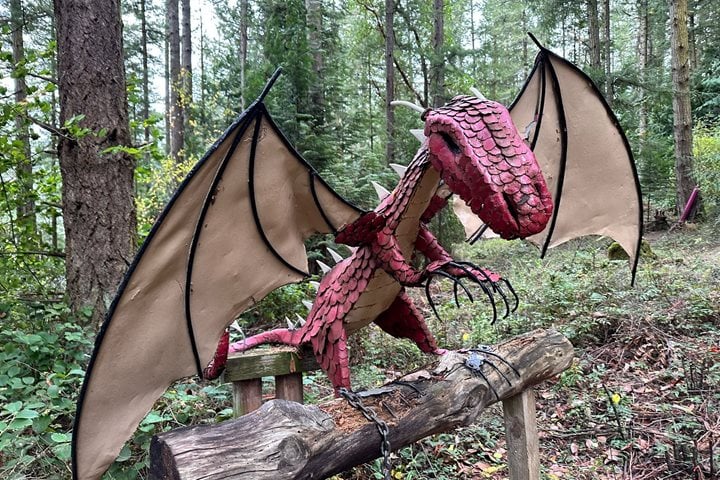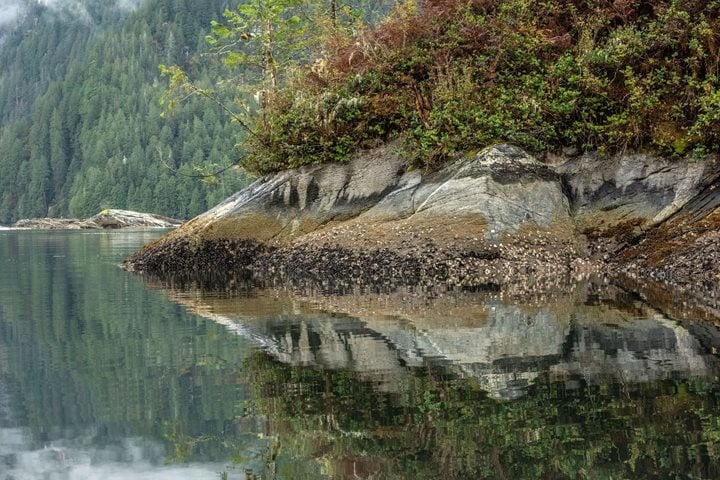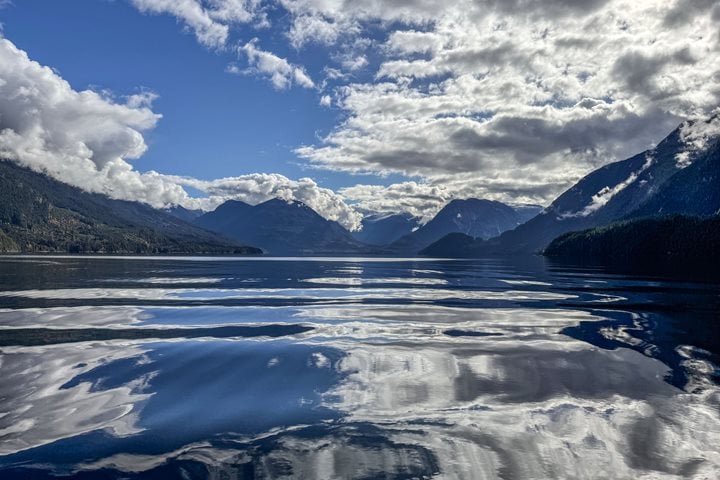This morning, we left Friday Harbor and ventured out
into the San Juan Islands. One hundred and seventy-four islands make up the San
Juans, and many of these have been made into conservation districts, wildlife
refuges, and state parks. We spent the morning looking for wildlife and spotted
a large pod of harbor porpoises near the Turn Point Lighthouse. There are eight
lighthouses in the islands, but this one is the most picturesque. We also saw a group of Steller sea lions and
two separate sightings of humpback whales. Our destination for the day was one
of the “jewels” of the region: Sucia Island Marine State Park. There are 11
different islands in this park; the main island has four different bays to moor
a boat and great opportunities for kayaking on sheltered waters.
Geologically, Sucia is perhaps the most interesting
island, with two distinct formations. The Nanaimo Formation was formed 80 to 90
million years ago and was once part of the seafloor. The Chuckanut Formation, formed about 55
million years ago, is sandstone that was once quarried and sent off to Seattle,
Olympia, and Bellingham for constructing buildings. Some of these buildings are
still standing today—the State Capitol Building of Washington is one of them.
The Chuckanut starts in the foothills of the Cascades beneath towering Mount
Baker (10,700 feet) and ends here on Sucia Island. There is a small part of Sucia
in the southwest that is made up of the Nanaimo Formation and it contains
fossils of marine creatures such as horseshoe crab, giant clam, and
ammonites.
The birding is always good here on Sucia, and today was no exception. A group of at least 50 black oystercatchers fed along the shoreline, harlequin ducks posed, and eagles and great blue herons foraged for fish. A family of river otters in Fossil Bay gave us a show with their antics, and of course, the harbor seals popped up their heads to watch us fossil hunt and kayak.







